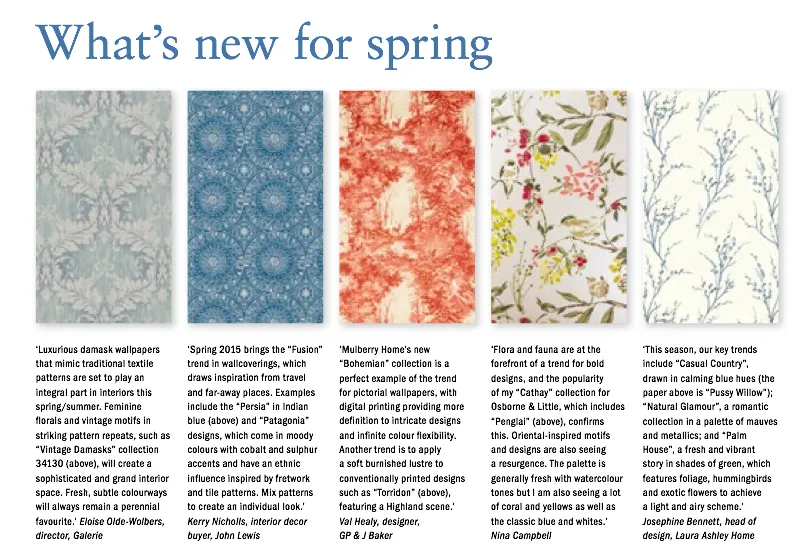1
Design matters
With so many different designs to choose from, it’s hard to decide which wallpaper pattern will create the effect you want.
Trailing patterns will help make walls seem taller, and large prints will visually expand the surface area. Seen from a distance, small prints will give the illusion of all-over texture but close up they add interest.
It sounds simple but, says Clare Vallis, Harlequin Group design director, ‘Today’s spirit of interior design is all about breaking the rules. My favourite look at the moment is to use two different-scale wallpaper designs in the same room. Mix florals with stripes or geometrics but, most importantly, have fun.’
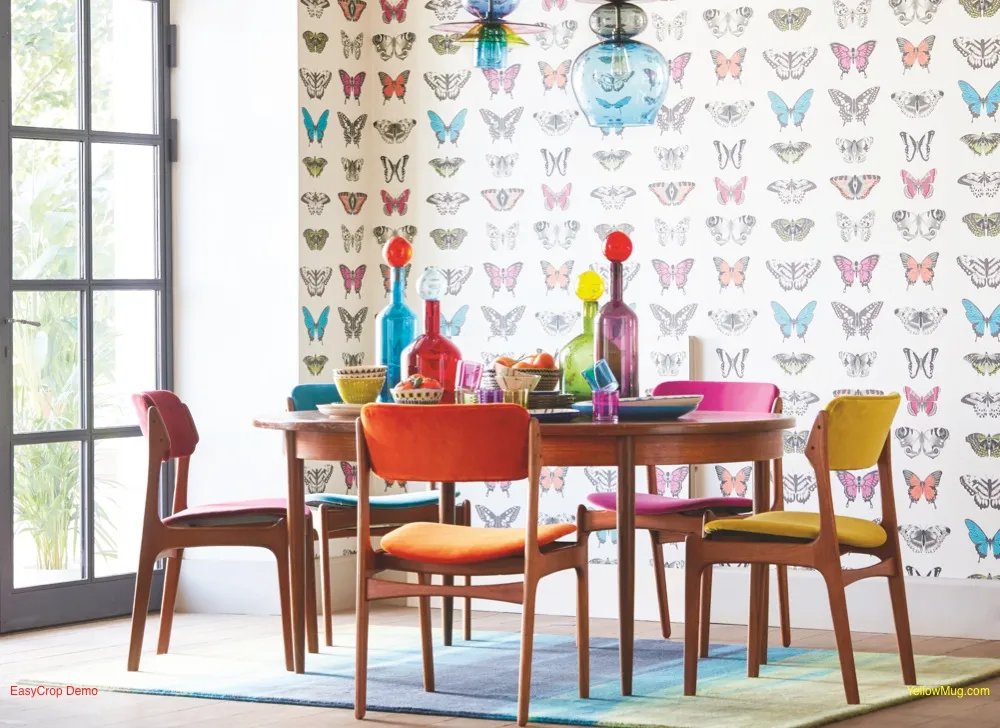
2
Art of illusion
Murals, trompe l’oeil and faux-effect wallcoverings can make a grand statement in any space, from the tiniest cloakroom to an open-plan living area.
Surface View produces made-to-measure murals that you can hang like wallpaper, with a vast choice of designs, including well-known works of art, landscapes, maps and fashion photographs. Wallpapers depicting shelves filled with antique books, objets trouvés, old love letters or postcards create atmosphere and interest, but one of the strongest trends in illusory wallcoverings is faux surfaces.
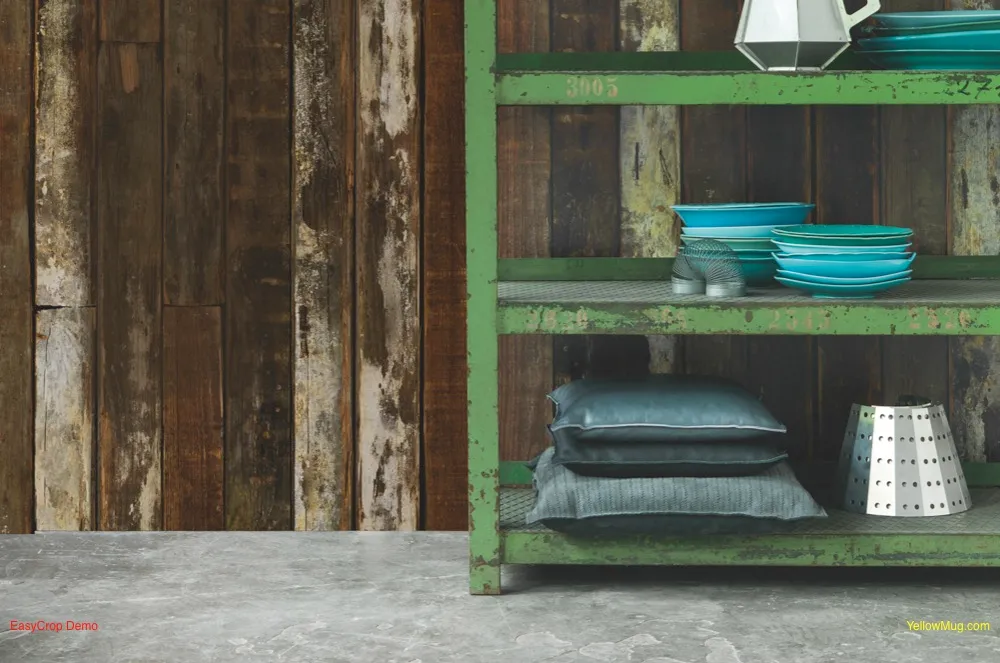
‘Industrial style continues to go from strength to strength and brick, distressed plaster and reclaimed-wood wallpapers are perfect for this’, says Jane Rockett of Rockett St George. ‘We would suggest the “Scrapwood” wallpaper (above) for a rustic Scandinavian feel or “Regent’s Oak Wood Panelling” for a traditional masculine interior.’
3
Living with colour
Colour is a key element in any decorating scheme. It can determine the mood, atmosphere and even the perceived proportions of a room.
Generally, cool hues such as blue and mauve have a soothing effect on sunny, south-facing rooms and, in their paler tints, make spaces appear larger and ceilings taller. Warm colours such as red and terracotta give a cosier feel and yellow brings a feeling of optimism.
Patterned wallpapers often contain several colours and, while the dominant hue will determine the mood of a room, the additional tones can inspire its entire decorating scheme.
‘Wallpaper is a wonderful way of introducing colour and pattern to a space,’ says Tricia Guild of Designers Guild, ‘the ombre effect of our "Trailing Rose" design allows plenty of white to be combined with the brighter colour and pattern, giving a sense of balance and harmony.’
4
Practicalities
Choosing a beautiful wallpaper is the fun part of decorating but, for a perfect finish, the surface beneath must be in peak condition, so make sure the walls are level, dry and dust-free.
Lining paper gives a smooth, clean surface on which to hang wallpaper and disguises any minor imperfections in the wall. ‘We recommend a heavyweight lining, such as Albany 1,200 grade, and you must use the same adhesive for both lining and top paper,’ says Melanie Adams, founder of Wallpaperdirect.
Purchase all the wallpaper you need in one go. You can expect three drops of wallpaper from each roll but, to allow for matching, a pattern that is larger or smaller than average will affect the total required. Online wallpaper calculators will help determine how much you need. Find them at wallpaperdirect.com, diy.com and homebase.co.uk.
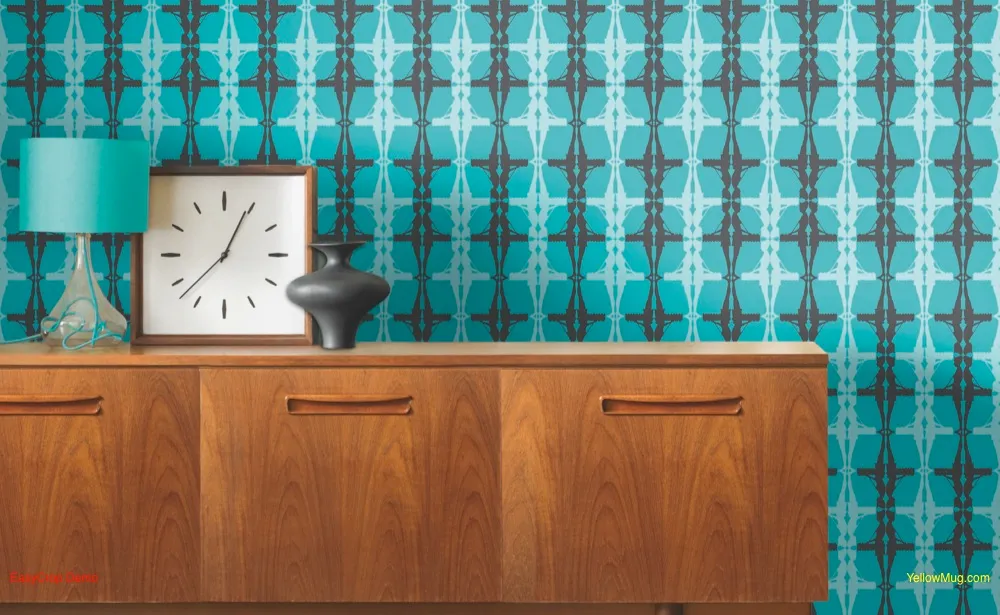
5
Surface interest
Textured wallcoverings have practical as well as decorative value. They can disguise less than perfect plasterwork, protect the walls in busy spaces, add depth to plain surfaces and enhance the designs of patterned ones.
Traditional materials, such as flock and embossed papers, continue to appeal but new techniques have increased the range of designs available. ‘Current design favourites include vertical grass cloths and fabric effects,’ says Nina Tarnowski, design studio manager at Graham & Brown.
For more pizzazz, opt for metallic wallcoverings that give the illusion of antique mirrors or make a crisp reflective background for matt-printed patterns. For a sparkling, bejewelled effect, go for papers scattered with translucent beads or flecks of mica.
6
In the print
Most wallpaper is produced by the gravure process, which allows colourful, tonal designs to be printed at an affordable price. Of the other printing methods, digital and hand-blocking are the most talked-about.
Hand-blocking is the traditional method of wallpaper printing using carved wooden blocks to produce patterns with a distinctive look and slight texture. Because of their high cost, authentic hand-blocked papers are most often used for historical projects.
Digital printing allows for countless colours to be used in designs of photographically fine detail and there is complete freedom of pattern repeat, so the process can be used to produce murals or friezes. ‘Both digital and hand-block printing are expensive and used for very top-end designer papers,’ says Liz Cann, design director at Sanderson.
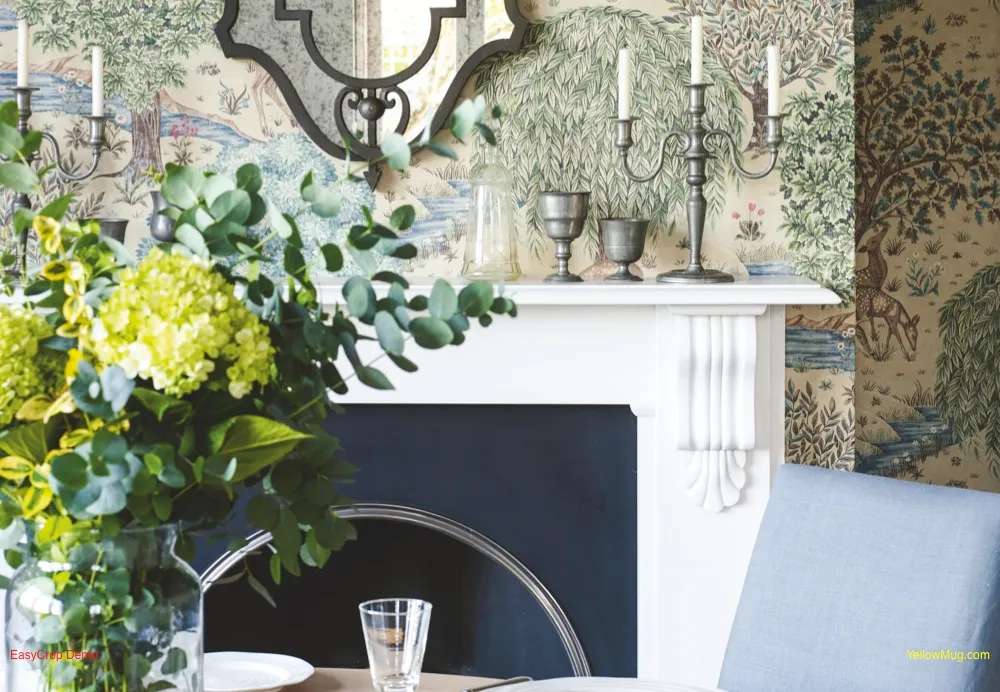
7
Making more of wallpaper
If you’ve ever found yourself with leftover paper too pretty to throw away, there are plenty of ways of using small quantities to great effect.
A feature wall is one idea but a similar concept that requires less wallpaper is to decorate only a chimney breast or inside alcoves.
Papering the panels of a cupboard door is also an effective way to show off a favourite wallpaper design, or you could line the interior of a wardrobe or drawers to give an intriguing shot of colour and pattern.
‘Try wallpapering a “headboard” on to a wall to create a piece of art in a master bedroom,’ suggests Sarah Cole, Farrow & Ball’s marketing director. Even smaller amounts of paper are great for transforming assorted storage boxes into a matching set or for lining drawers.
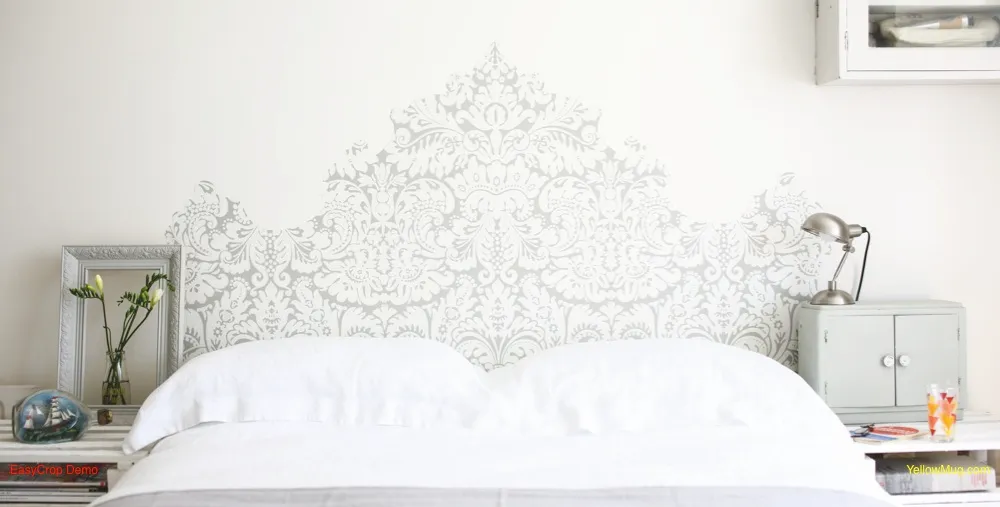
8
Respecting the past
Is wallpaper or paint more authentic in a period property? That depends on the type and age of your home. In the 16th century, wallpapers were only seen in grand houses but by the late 18th century they were within reach of the middle classes.
‘After 1840, mechanisation caused prices to drop and wallpaper became widespread,’ says Christine Woods, former wallpaper curator at the Whitworth Gallery and editor of the Wallpaper History Review. ‘From the mid-Victorian era, people papered every room but the quality of the paper varied, with the most expensive often reserved for the hall and parlour.’
Uneven walls have been no barrier to using wallpaper: 19th-century Australian settlers even papered straight on to their homes’ planked walls.
